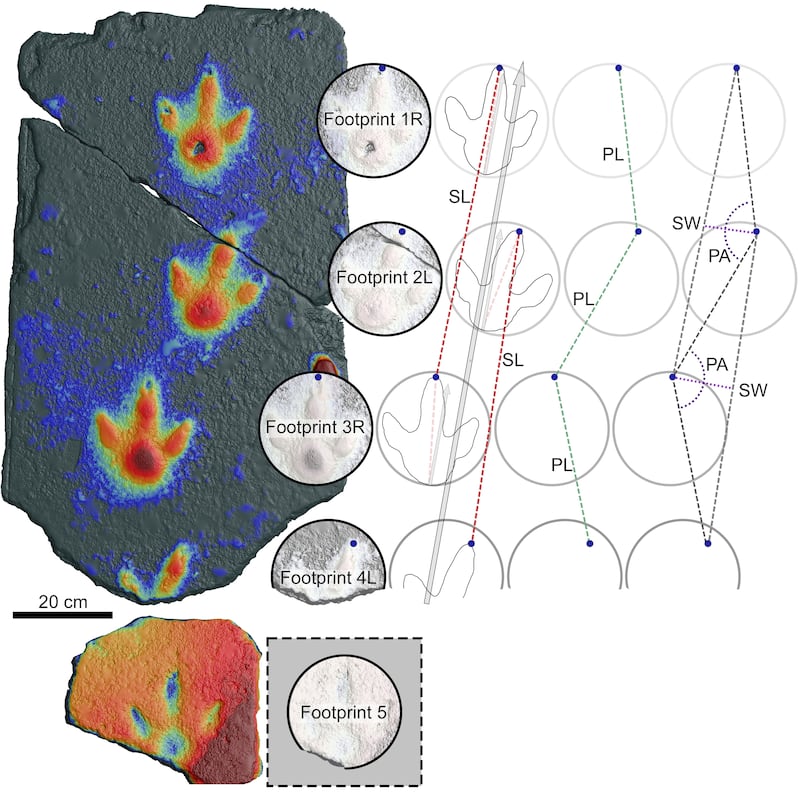Ancient moa footprints have been discovered in South Kaipara, offering a significant historical connection for the region’s many descendants.
For the past two years, Ngāti Whātua o Kaipara post-settlement entity, Ngā Maunga Whakahī o Kaipara, has collaborated with Tāmaki Paenga Hira to research the moa whose footprints were found preserved in a sandstone slab.
Ngā Maunga Whakahī o Kaipara Tumuaki, Malcolm Paterson, describes the discovery as remarkable, highlighting its deep connection to the region’s ancestral knowledge of this extinct species.
“Our kōrero in South Kaipara has events, names of people and events, even physical structures that relate to the interactions of our tūpuna with moa.”
How they were found
The footprints were uncovered when a couple strolling along a remote beach in South Head, Kaipara, discovered them preserved in sandstone.
A powerful storm that swept through Auckland in 2023 caused the stone to split in half, revealing the ancient imprints.

Paterson sees this as a valuable opportunity for the region to share its history with future generations.
“They bring to life those names and those stories. They very much not just make it a theoretical story but a real thing you can see.”
Māori perspective on the moa
Māori society is rich with stories, places, and ancestral names that honor significant events and contributions.
Southern Kaipara is one such place, where the moa holds a strong presence in local history, reflected in ancestral names and traditions.
Paterson shares the name of an ancestor from the region and their connection to the bird.
“There is a name that was given, Rangihuamoa. That was linked to one of the last times that evidence of moa was seen by our tūpuna in South Kaipara in the rohe.”
The size of the moa
Research by Tāmaki Paenga Hira and Ngā Maunga Whakahī o Kaipara reveals that the discovered moa was smaller than usual.
Standing about 80 cm tall at the hip—slightly shorter than a fully-grown emu—it weighed up to 29 kg, roughly the weight of a 10-year-old child.
The findings also indicate that the moa was moving at a leisurely pace of 1.7 km/h, slower than most adult humans and emus.
However, Paterson is fascinated by the age of the footprints.
“These footprints are much older than that, they’re older than people if they’re a million years old. They’re one of our homo-sapien tupuna times, a million years ago. But, still there is a link there. There’s a link from whatever made these footprints to the moa that our ancestors encountered in South Kaipara.”
This stone will remain in the region of Ngāti Whātua o Kaipara and serve as a connection to the world of their ancestors and as a pool of history for descendants to come.


